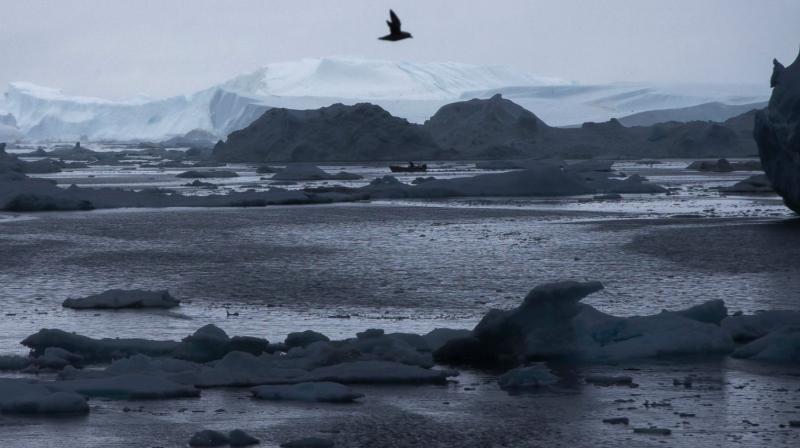Natural variations cause major chunk of Arctic sea ice loss
Arctic sea ice in recent decades has declined faster than predicted by most models of climate change, researchers said.

Washington: A substantial chunk of summer sea ice loss in the Arctic in recent decades is due to natural variability in the atmosphere, although climate change driven by human activities is still playing a key role, a new study has found.
Arctic sea ice in recent decades has declined faster than predicted by most models of climate change, researchers said. Many scientists suspect that the trend now underway is a combination of global warming and natural climate variability.
"Anthropogenic forcing is still dominant - it is still the key player," said Qinghua Ding, a climate scientist at the University of California Santa Barbara. "But we found that natural variability has helped to accelerate this melting, especially over the past 20 years," said Ding. Previous research found changes in the tropical Pacific Ocean have created a "hot spot" over Greenland and the Canadian Arctic that has boosted warming in that region.
The hot spot is a large region of higher pressure where air is squeezed together so it becomes warmer and can hold more moisture, which brings more heat to the sea ice below. The study focuses specifically on what this atmospheric
circulation means for Arctic sea ice in September, when the ocean reaches its maximum area of open water.
"The idea that natural or internal variability has contributed substantially to the Arctic sea ice loss is not entirely new," said Axel Schweiger, polar scientist at
University of Washington. "This study provides the mechanism, and uses a new
approach to illuminate the processes that are responsible for these changes," said Schweiger.
Ding designed a new sea ice model experiment that combines forcing due to climate change with observed weather in recent decades. The model shows that a shift in wind patterns is responsible for about 60 per cent of sea ice loss in the
Arctic Ocean since 1979. Some of this shift is related to climate change, but the
study finds that 30-50 per cent of the observed sea ice loss since 1979 is due to natural variations in this large-scale atmospheric pattern.
"What we've found is that a good fraction of the decrease in September sea ice melt in the past several decades is most likely natural variability," said David Battisti, a UW professor. "The method nails down how much of the observed sea ice trend we've seen in recent decades in the Arctic is due to natural variability and how much is due to greenhouse gases," said Battisti.
The long-term natural variability is ultimately thought to be driven by the tropical Pacific Ocean. Teasing apart the natural and human-caused parts of sea ice decline will help to predict future sea ice conditions in Arctic summer. The study was published in the journal Nature Climate Change.

